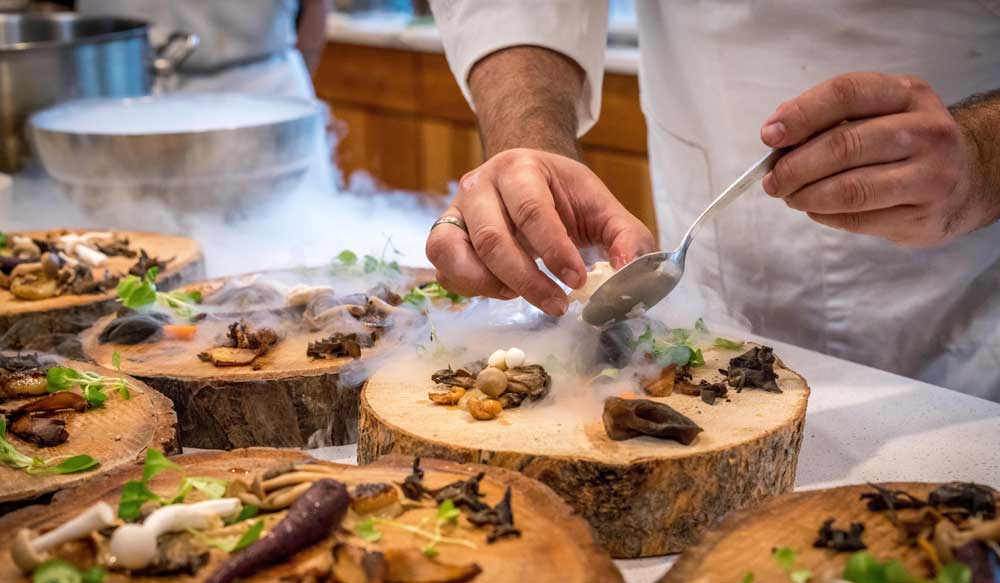Every year innumerable trends are proclaimed for the gastronomy industry, often hollow prophecies, short-lived fashions, forgotten in the next season. However, some trends drag on for years and change gastronomy lastingly. If you want to stay on the ball in the long term, you should already be dealing with the following mega trends.
1. Only hipp is out

In recent years, contemporary gastronomy has mainly focused on the young, urban population, colorful, loud, experimental, staff with sneakers instead of ties, tattoos instead of certificates, surprises in the kitchen, contrasts, and effects. However, a growing number of older and wealthy guests in cities search for a different experience. In service: sovereign, and professional maturity will once again be in demand. And in the kitchen: classics, substance instead of spectacle - with a contemporary twist. Those who know how to merge past and future in their location, kitchen and service will quickly attract the attention of younger and older guests.
2. Take-out is mandatory

Rising rents, high mobility, new players in gastronomy, from pure delivery services such as delivery hero to large tech companies such as Amazon: These are the main ingredients of the lasting take-out trend. Restaurants without a special rating or location will quickly be put under the wheels of the delivery services. Play the take-out or catering card and you'll prepare your restaurant for the future. Put transportable dishes on the menu, accept online orders or cooperate with delivery services and you will maintain or even increase your sales.
3. Data is the most important ingredient for restaurants

Everyone is talking about digitalization - but only a few restaurants have embraced it. Digital tools are rarely used, especially in smaller restaurants. Many restaurants still work with a good old reservation book (by the way, in the blog post "Less effort, more guest - How to" we have described how restaurant managers can achieve remarkable successes digitally with little effort.)
The value of high-quality guest data is underestimated in gastronomy. Linking cash-register data, reservations, customer data, and orders opens up fantastic possibilities for planing, service, up-selling and more. For example, hyper-personal service, optimized order and delivery times, perfectly synchronized preparation and the super-efficient use of staff and resources.
This data is also worth its weight in gold for marketing. To this day, many newsletters in the gastronomy are sent according to the watering can principle. This results in high wastage and low interaction rates. Guests do not only expect good service in restaurants, but also tailor-made offers in advance.
Only guests who provide their data will benefit comprehensively from the new opportunities. Following numerous data scandals, recent reforms of privacy and data protection laws in the EU and Switzerland safeguard the digitalization. The acceptance of online services will rise again, and digitalization of the catering industry will pick up speed rapidly.
Analogue niches will remain, but provide space for only a few restaurants.
4. Health instead of just enjoyment

New food trends are less and less about new tastes. The big trend is turning food into nutrition, transforming taste into holistic enjoyment. Not only the palate should be stimulated when eating, but also circulation, skin, brain, and intestines. A challenge for kitchen and service. The growing importance of allergens to anti-inflammatory ingredients will favour two developments. Firstly, clear concepts and statements in the kitchen. Those who only offer Fried Chicken will already be selecting in front of the door and will not have to have long discussions about healthy nutrition at the table.
On the other hand, concepts that already incorporate the most important health trends so that guests' needs can be met in an informed and flexible manner and critical ingredients can be easily replaced. And if you want to be at the forefront, you should already be offering tap water that is not only carbonated but also hydrogenated.
5. Sustainability beats taste
Food is political. It is no longer possible without clear statements. Terms such as sustainability, local, organic will soon be on every menu. The Carbon footprint of food and drinks has also become a criterion. For this reason, various restaurants in Switzerland have removed avocado from the list of ingredients. For example, the pioneer of vegetarian cuisine in Zurich - the Hiltl - or the Café des Amis:
From vegetables from the local region, Nose-to-Tail and Leaf-to-Root, to national organic wine to ecological manufacturing - the possibilities to promote sustainability in gastronomy are manifold. And they are appreciated by the guests. The Future Institute in Frankfurt has listed some food concepts such as re-use food.
But be aware: Those who only talk but don't act sustainably will fall on their noses. The guests are informed! Clear concepts and full commitment are necessary for credibility - and above all: use good products and avoid food waste, everywhere, not just where it is clearly visible.





